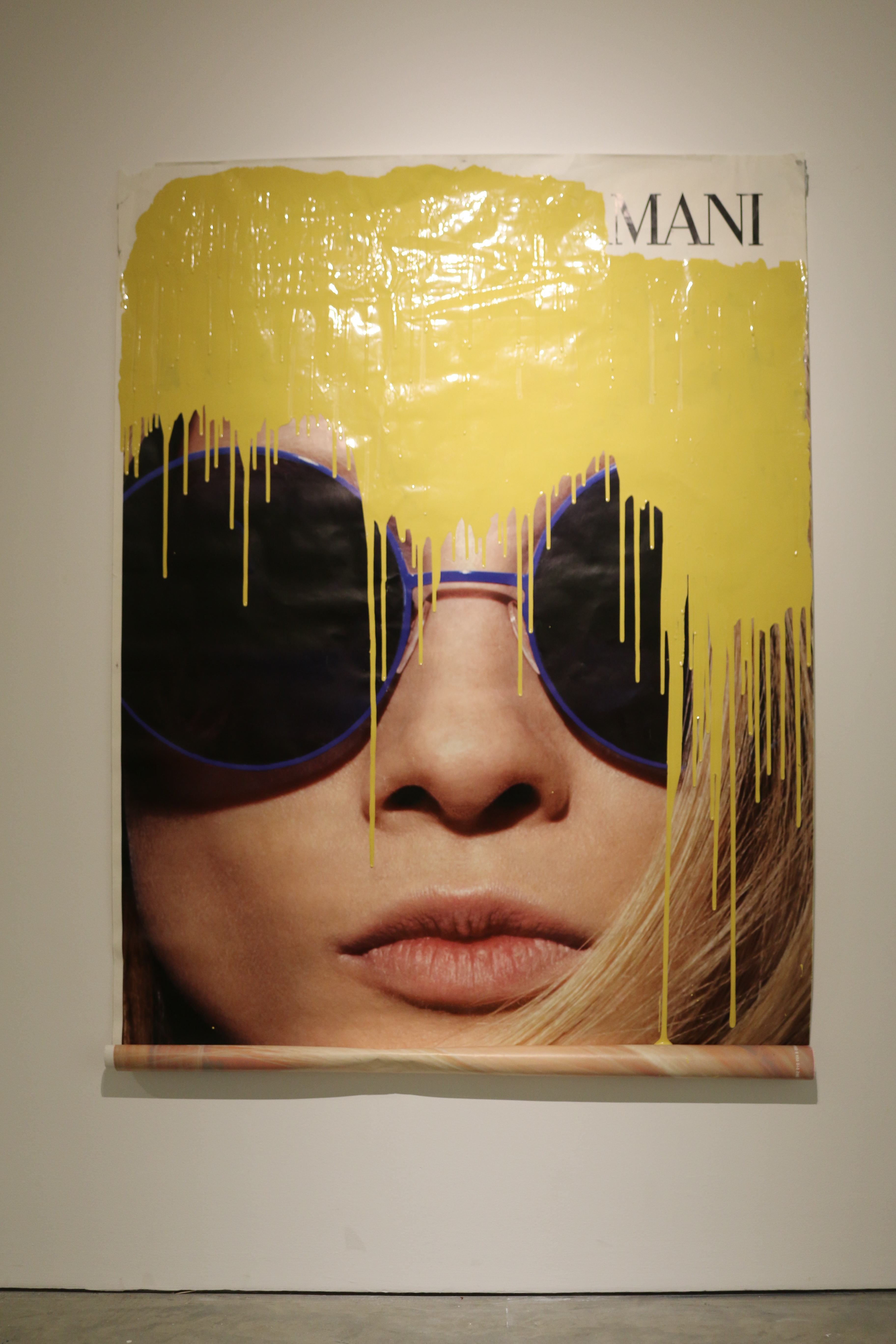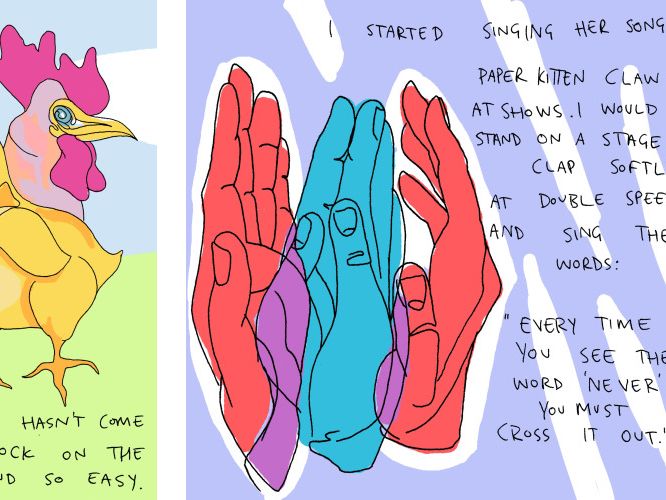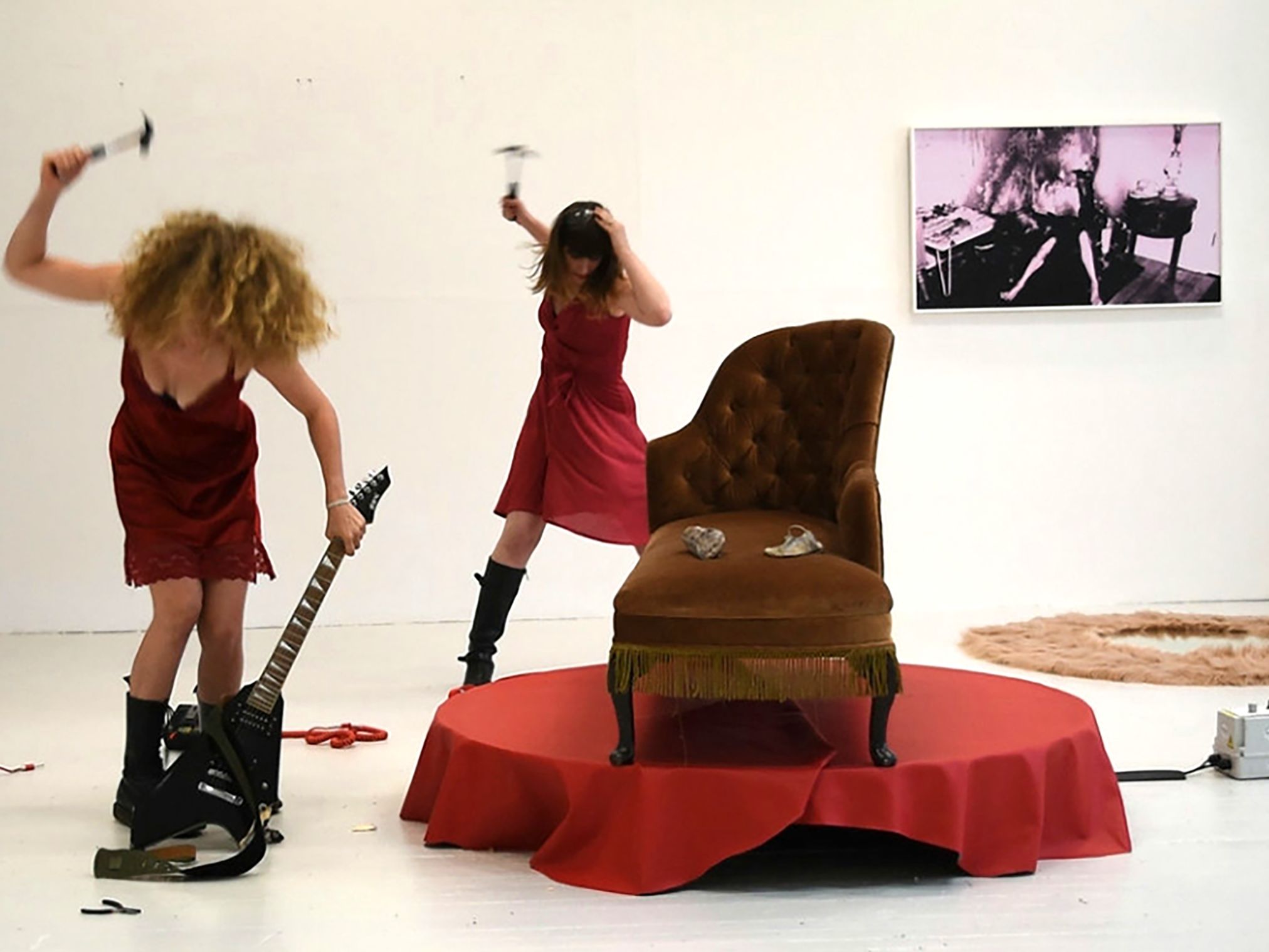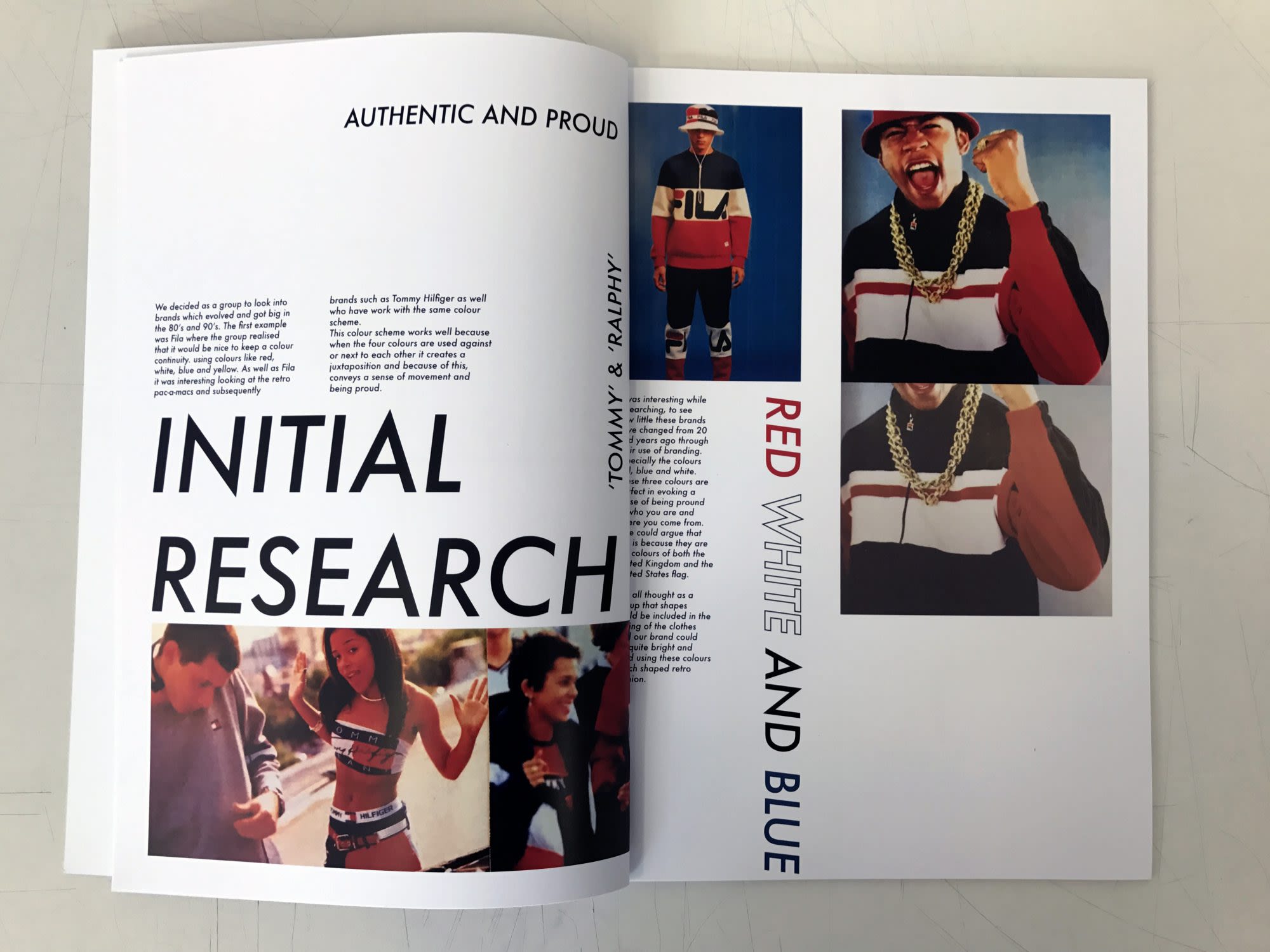Exhausting the image is all about seeing how far you can push a found image and make it your own. Using a found piece of footage or a magazine advert whilst experimenting with material processes, how can you transform it into something else?
Below are some examples of artists that might inspire you.
Linder: Cut it up
The Bower of Bliss
Video: ‘The Bower of Bliss’ by Linder for Southwark station, courtesy of Art on the Underground. In this video, go behind the scenes on Linder’s project for the London tube station which includes photomontage work.
David Bowie famously created song lyrics by cutting up words from diaries, newspapers and books, putting them in a paper bag and seeing what fell out. Linder has used a similar process called photomontage (cutting up images from different sources and fusing them together to make a new image) during her career. Art on the Underground describe the artist’s work: “Linder has been working with photomontage for the past three decades, created from images lifted from erotic, women’s fashion and domestic magazines. The photomontages manipulate and disrupt to challenge cultural expectations of women and in particular the female body as commodity.”
Find out more about Art on the Underground projects
Ellen Gallagher: Cover it up

In her series ‘DeLuxe’, Ellen Gallagher uses plasticine, toy eyeballs, coconut oil and velvet to play with advertising found in magazines from the 1930s – 1970s, aimed at African American consumers. “With interventions such as covering up models’ faces and whiting out or cutting out eyes, Gallagher emphasises the complexities surrounding the construction of identity, specifically in relation to race and gender.” (Tate)
View more of Ellen Gallagher’s work
Find out more about Ellen Gallagher via Gasgosian
Wangechi Mutu: Make a whole new world

Wangechi Mutu is an artist who uses imagery from a whole range of sources such as plants, flowers, animals and natural history magazines to create portraits and new imagined landscapes. In works like ‘You were always on my mind’ She uses intricate paint techniques to make all these separate images come together to read as one, as well as adding crystalline particles and plastic pearls to give a further ethereal feel. The result is artworks that feel like they are other-worldly yet somehow familiar too.
Find out more about Wangechi Mutu’s approach to making work in ‘Wangechi Mutu: Cultural Cutouts’.
Copyright: Louisiana Channel, Louisiana Museum of Modern Art, 2015.
Arthur Jafa: Use them to tell a story

Set to Kanye West’s ‘Ultralight Beam’, Arthur Jafa’s piece ‘Love is the Message’ uses found historic and contemporary film footage to trace African American history and experience. At moments it can be confrontational, and Jafa throws in some of his own film footage from his family, which makes the whole piece feel collective and yet very personal. When it was shown at the 180 The Strand building in London as part of an exhibition presented by The Vinyl Factory, there were queues to watch it; a very special piece that needs watching over and over again so that you can take it all in.
Explore more of Arthur Jafa’s work online
Rosemary Cronin: Throw something over it

In my own work, I often play with found imagery. My bus stop paintings are an ongoing series where I have used gloss paint over large-scale advertising imagery from the beauty and cosmetic worlds, to subvert their original intention. By stripping the image of its branding we are left with the gaze of the model, nothing to sell.
Discover more of Rosemary’s work online
Advisory note: Some of the artists featured in this article explore themes of an adult nature.




